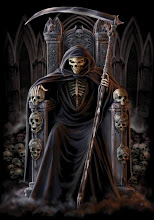Good Morning. Here is the daily dose for the day.
We have known about the Hiroshima-Nagasaki Bombings and the shockwaves they sent across the world. Today we shall see some of the not so known facts about those bombings. Just read on.
1. Straight Flush was the name of a B-29 Superfortress (B-29-36-MO 44-27301, victor number 85) participating in the atomic bomb attack on Hiroshima on August 6, 1945.Assigned to the 393rd Bomb Squadron, 509th Composite Group, it was used as a weather reconnaissance plane and flew over the city before the final bombing to determine if conditions were favorable for an attack.
2. Claude Robert Eatherly, was an officer in the U.S. Army Air Forces during World War II, and the pilot of a weather reconnaissance aircraft Straight Flush that supported the dropping of the atomic bomb on Hiroshima, Japan, 6 August 1945.Years later, Eatherly claimed to have become horrified by his participation in the Hiroshima bombing, and hopeless at the possibility of repenting for or earning forgiveness for willfully extinguishing so many lives and causing so much pain. He tried speaking out with pacifist groups, sending parts of his paycheck to Hiroshima, writing letters of apology, and once or twice may have attempted suicide. Some think he committed such acts because of schizophrenia or anxiety disorder, for which he was held for many months at the Veterans' Administration Hospital in Waco, Texas.
3. The Hiroshima Maidens are a group of twenty-five young Japanese women who were seriously disfigured as a result of the atomic bomb dropped on Hiroshima on the morning of August 6, 1945.Keloid scars marred their faces and many of their hands were bent into claw-like positions. These women, as well as the other citizens affected by the A-bomb were referred to as hibakusha, meaning "explosion-affected people."
4. The Japanese program to develop nuclear weapons was conducted during World War II in response to the perceived threat of its enemies (principally the United States) obtaining such a weapon first and using it against Japan. Like the German nuclear weapons program, it suffered from an array of problems, and was ultimately unable to head off the Manhattan Project's development of the bombs that fell on Hiroshima and Nagasaki
5. On March 24, 2009, the Japanese government recognized Tsutomu Yamaguchi as a double hibakusha. Tsutomu Yamaguchi was confirmed to be 3 kilometers from ground zero in Hiroshima on a business trip when the bomb was detonated. He was seriously burnt on his left side and spent the night in Hiroshima. He got back to his home city of Nagasaki on August 8, a day before the bomb in Nagasaki was dropped, and he was exposed to residual radiation while searching for his relatives. He is the first confirmed survivor of both bombings.
6. Japan's Three Non-Nuclear Principles are a parliamentary resolution (never adopted into law) that have guided Japanese nuclear policy since their inception in the late 1960s, and reflect general public sentiment and national policy since the end of World War II. The tenets state that Japan shall neither possess nor manufacture nuclear weapons, nor shall it permit their introduction into Japanese territory. The principles were outlined by Prime Minister Eisaku Sato in a speech to the House of Representatives in 1967 amid negotiations over the return of Okinawa from the United States. The Diet formally adopted the principles in 1971.
7. The United States expected to have another atomic bomb ready for use in the third week of August, with three more in September and a further three in October. On August 10, Major General Leslie Groves, military director of the Manhattan Project, sent a memorandum to General of the Army George Marshall, Chief of Staff of the United States Army, in which he wrote that "the next bomb . . should be ready for delivery on the first suitable weather after 17 or August 18."
8. The Atomic Bomb Casualty Commission (ABCC) was a commission established in the spring of 1948 in accordance with a presidential directive from Harry S. Truman to the National Academy of Sciences-National Research Council to conduct investigations of the late effects of radiation among the atomic-bomb survivors in Hiroshima and Nagasaki. As it was erected purely for scientific research and study, not as a provider of medical care and also because it was heavily supported by the United States, the ABCC was generally mistrusted by most survivors and Japanese alike. It operated for nearly thirty years before its dissolution in 1975.
9. Initially Nagasaki was not the intended target. On May 10–11, 1945 The Target Committee at Los Alamos, led by J. Robert Oppenheimer, recommended Kyoto, Hiroshima, Yokohama, and the arsenal at Kokura as possible targets.
10. Some of the reinforced concrete buildings in Hiroshima had been very strongly constructed because of the earthquake danger in Japan, and their framework did not collapse even though they were fairly close to the blast center. Eizo Nomura was the closest known survivor, who was in the basement of a modern "Rest House" only 100 m (330 ft) from ground-zero at the time of the attack.[39] Akiko Takakura was among the closest survivors to the hypocenter of the blast. She had been in the solidly built Bank of Hiroshima only 300 metres (980 ft) from ground-zero at the time of the attack.
Whatever said or done, no body can erase the gory memories of Hiroshima-Nagasaki.
Source: Wikipedia
Mohan Rao.
A beautiful woman who is pleasing to men is good only for frightening fish when she falls into the water.
- Zen proverb
Subscribe to:
Post Comments (Atom)

No comments:
Post a Comment